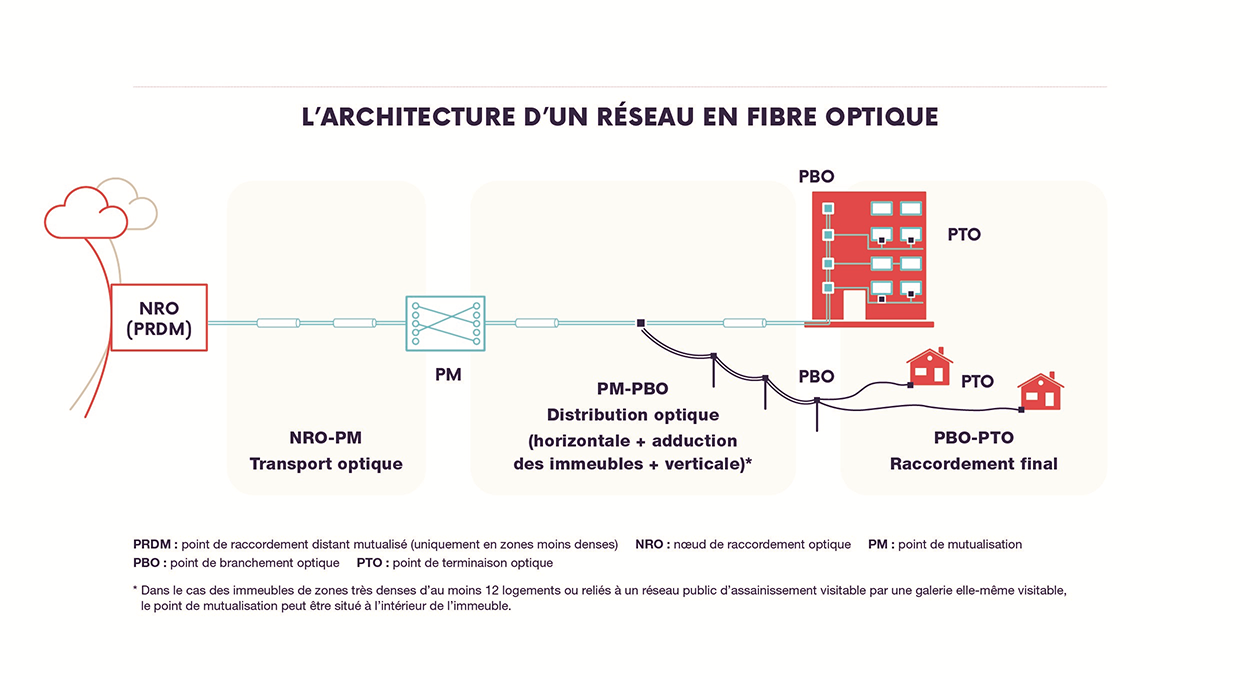Carried out during the first six months of 2022, this field inspection covered a sample of 840 shared access points (SAP) and 3,600 optical connection points (OCP) located in the most sparsely populated parts of the country: those parts of the country where the Government has issued a call for investment letters of intent ("zones AMII"), those covered by legally binding “AMEL” FttH rollout commitments and by public-initiative networks (PIN).
Because of inherent biases and results that are not statistically representative, due to the methods for selecting the equipment of the analysed networks (SAP and OCP) and the size of the sample[1], this field analysis delivers only qualitative findings.
Defects, particularly in the condition of the wiring, were recorded in a substantial percentage of SAP and OCP.
The field inspection highlighted the following elements.
Only half of the wiring in the inspected SAP follow best practices for labelling the wires and their organisation inside the SAP. Added to which, the condition of the wires appears to be more deteriorated the larger the number of cables there are connected to the shared access point (neighbourhood cabinet).
The condition of the wiring of the inspected OCP – which includes mounts for the connection cables, preparation of unused fibres and labelling – was generally acceptable in most cases. However, a substantial percentage of the OCP had issues in this area which could lead to quality-of-service difficulties in the medium term.
The “mechanical” condition of the inspected SAP and OCP – which, for SAP includes the integrity of the outer casing, the presence of labelling, the condition of the lock and the pushrods for threading cables and, for OCP, the integrity of the outer casing, the presence of labelling, mounting and accessibility – is satisfactory overall. However, a substantial percentage of the SAP had issues in this area.
The condition of OCP installed in roadside cabinets is inferior to that of other types of OCP (wall mounts, indoor, poles). OCP are often less well secured when located in a cabinet, and the outer casing of OCP was less well sealed, with water found inside the boxes in a large number of cases.
Lastly, on the whole, the condition of the infrastructures (SAP and OCP) inspected in Ile-de-France appear to be in a less good overall condition than those inspected in the other regions.
Arcep draws operators attention to the importance of fixing the recorded defects and of introducing measures to prevent these defects from reoccurring in future, to help future-proof the networks
In most instances, the defects recorded do not currently translate into notable quality of service issues, which can be caused by factors other than the condition of the infrastructures, such as network provisioning or information systems’ standards compliance and quality.
However, the failure to rehabilitate the infrastructures and fix the recorded defects – lack of labelling, chaotic cross connections, casing integrity issues, etc. – could render operations difficult and, in the more or less long term, impede the networks’ smooth operation.
This study is an adjunct to the technical and operational inter-operator work that has been ongoing since 2019, with a view to remedying operational issues observed on FttH networks (see inset below).
Actions taken by operators, under Arcep’s aegis, to improve the quality of fibre network operations
To resolve the growing number of reports from users on issues they are encountering on fibre networks, Arcep departments have been chairing the “FttH Operations” working group since April 2019, bringing together every operator with a view to improving FttH network operating conditions.
As part of this work, in March 2020 operators adopted an initial “Quality roadmap” for implementing technical and contractual changes, after which the Authority published a supplementary action plan to improve the quality of FttH network operations in late 2021, which had three main strands:
• Better monitor service calls thanks to the introduction of an inter-operator tool for real-time notification of service calls and automatic analysis of the photographic record;
• Limit the number of sub-contractors and improving the training given to service technicians;
• Bring the most dilapidated infrastructures up to code.
Following through on this supplementary action plan, operators and digital infrastructure sector representatives made a commitment in late September 2022, to the Minister responsible for electronic communications and digital affairs, and to the Arcep Chair, in four areas:
• Introduction of a seal of approval for technicians and enterprises attesting to technicians’ skills;
• Strengthening spot checks of service calls thanks to the implementation of e-service calls and having commercial operators share their technical service call work schedules on a weekly basis (on some 20 public-initiative networks to begin with);
• Better monitor connection quality thanks to a path for improving the photographic record of service calls to make them more useable;
• Rehabilitation of dilapidated infrastructures, which includes not only the network’s physical restoration but also realigning operators’ information networks with the reality in the field.
Arcep will continue to be vigilant in monitoring and ensuring the concrete and rapid completion of these actions, and compliance with the commitments made.
Associated document :
[1] There are around 240,000 SAP in France today

